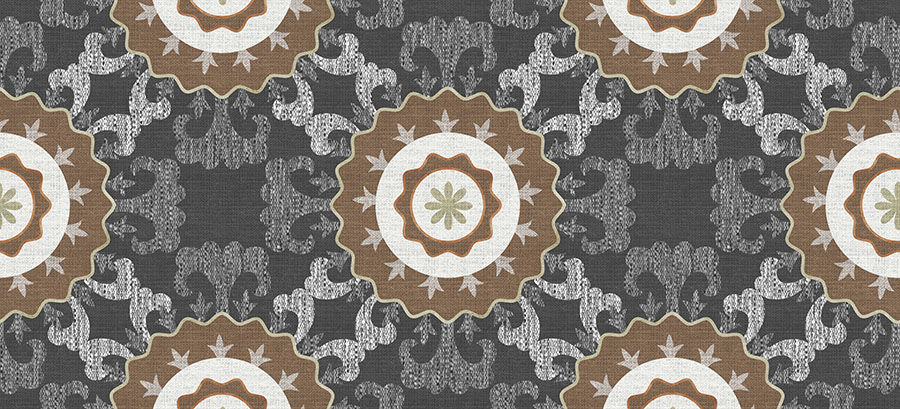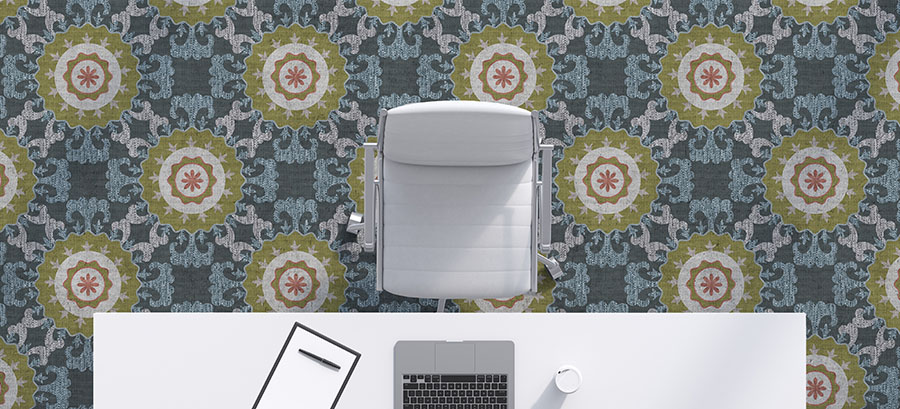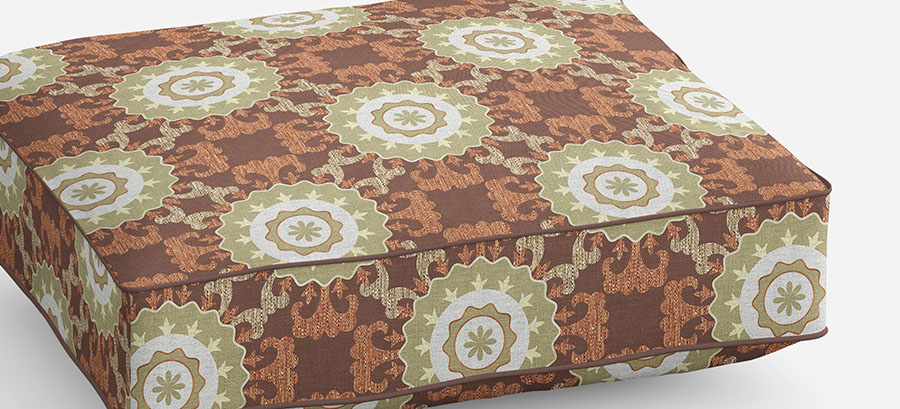Suzani Pattern Definition and Design
Anyone lucky enough to have seen a suzani up close will always remember the experience. These beautiful textiles are expertly crafted by skilled artists, and their size and density of stitches are awe-inspiring. The stitching is what gives these textiles their name. The word suzani is derived from the Persian word suzan, which means needle. A Suzani is a hand-embroidered, decorative textile made in Central Asia, particularly Tajikistan, Uzbekistan, and Kazakhstan. These large textile panels were made by nomadic tribes and were an integral part of their nomadic lifestyle. Used mainly inside a yurt, these textiles often served as a protective wrapping to hold belongings when moving. Since large, solid pieces of furniture were not conducive to a nomadic lifestyle, they were also used for table and bed linens, prayer mats, and seating.
Like most textiles in people’s lives, a suzani serves a practical function and a symbolic one.
Brides and their mothers traditionally made these textiles as part of their dowry. Often presented to a groom on the day of the wedding, the textiles symbolized the joining of two families. Motifs for dowry textiles included symbols of good luck, good health, and fertility. Common motifs include flowers, leaves, fruits, particularly pomegranate, the sun, and the moon. When designing, artists felt specific motifs offered the suzani spiritual powers, such as protection or strength to the user.
Most suzanis are made of cotton, although sometimes a maker opted for silk. The intricate pattern is drawn onto the cotton base fabric before embroidering begins. Large panels are often made in two or more pieces and sewn together later. This technique makes hand stitching more manageable and allows for more than one person to work on a piece at the same time. Generally, only four different stitches are used: tambour, basma, chain, and kanda-khayol. While traditional suzanis were stitched with naturally dyed threads eventually, synthetically dyed threads came into use.
Historians believe people were using suzanis as early as the 15th century, but the oldest surviving examples are from the late 18th, early 19th century. The lack of older examples is likely because suzanis were working textiles and part of a nomadic household. The stresses put on them in their daily functions meant that they often wore out over time.
Contemporary makers are still producing traditional suzanis today, satisfying a market of textile lovers eager to incorporate these unique textiles into their homes. Just as lovers of ikat or batik might create a pattern inspired by this technique, print and woven designers often use the images of suzanis in entirely new patterns. Fabrics woven on jacquard looms or printed on cloth are often inspired by the gorgeous suzani imagery.
Sources:
Share this post
Author
DESIGN/COLOR TRENDS AND AWESOME INFORMATION IN YOUR INBOX
Sign up for our monthly trend letter










